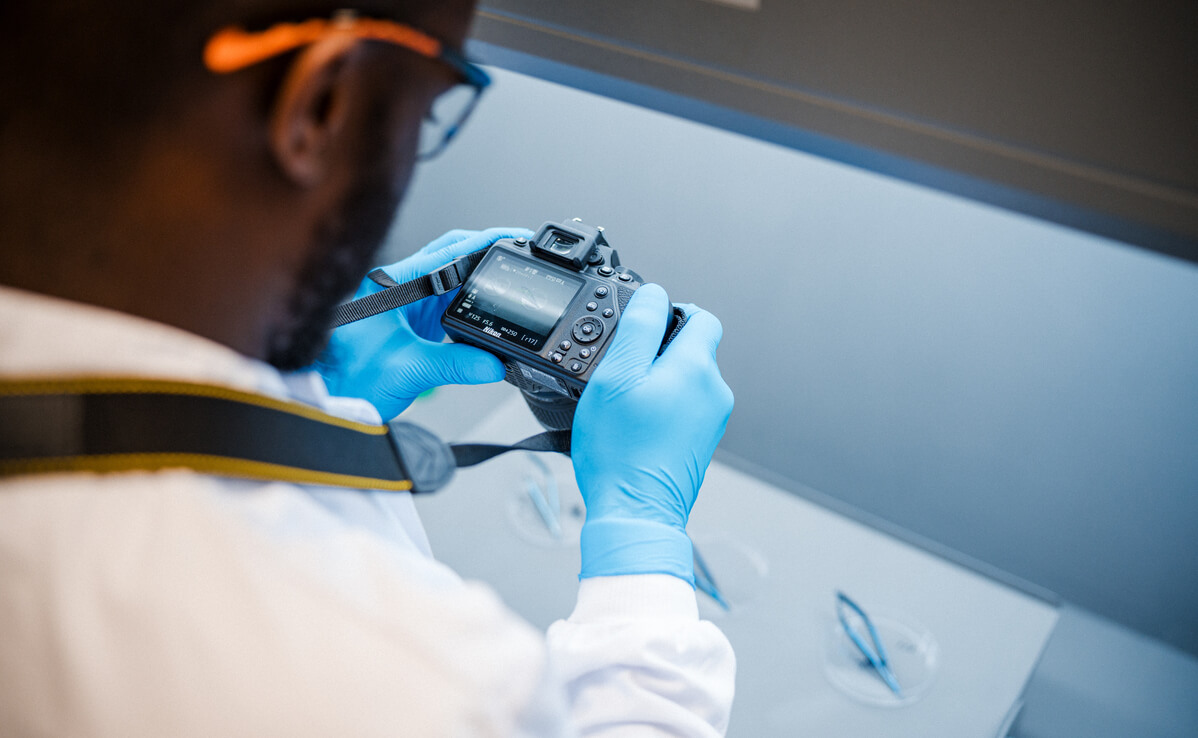Navigating Disinfectants and Medical Device Compatibility in Healthcare Settings
Article Summary
Incompatibility between disinfectants and device materials results in equipment damage and higher HAI rates. Understanding and addressing root causes is essential.Article Contents
Introduction
In the ongoing battle against infections, surface material compatibility often goes unnoticed, yet it significantly impacts both patient and healthcare provider safety. This article explores the critical relationship between disinfectants and medical device compatibility, stressing the importance of addressing these challenges in healthcare settings. Ensuring that medical devices and disinfectants can coexist without causing damage is essential for maintaining high standards of patient care.
Understanding Compatibility & its Importance
Thorough surface disinfection is a top priority in infection prevention, but material compatibility poses a challenge in today’s fast-paced healthcare environment. Compatibility refers to a material’s ability to withstand exposure to disinfectants without compromising functionality.
Medical devices, especially those in healthcare settings, are often made from plastics, polymers, and elastomers, chosen for their durability and flexibility. However, some disinfectant chemicals can adversely affect these materials. Over time, chemical interactions can weaken materials, leading to tiny cracks or fractures that compromise device performance.
Environmental stress cracking (ESC) is gradual and often goes unnoticed until the material fails. This can lead to unexpected device malfunctions, endangering patient safety and necessitating costly repairs or replacements. When materials degrade, they are considered incompatible, which can manifest in various forms, such as discolouration or cracking, diminishing the device’s effectiveness and lifespan.

The Burden of HAIs and the Need for Compatibility
HAIs present a significant challenge, with around 98,000 patients affected daily, as reported by the European Centre for Disease Prevention and Control (ECDC). The financial strain on healthcare systems is enormous, with estimated annual costs to the NHS around £2.7 billion.
Decontamination requires a balance between disinfectants strong enough to eliminate harmful bacteria and gentle enough to preserve the integrity of medical devices, crucial for saving lives. Surface material compatibility is key, as it involves the interaction between device materials and disinfectant ingredients. Without proper compatibility, healthcare settings face increased risks of device malfunction, patient harm, and higher operational costs.
What Causes Incompatibility?
Understanding the causes of incompatibility is crucial for safe disinfectant use without jeopardising medical equipment integrity, some key reasons include:
- Increased Disinfectant Usage: Heightened infection outbreaks increase the frequency of disinfection, leading to more chemical exposure to equipment surfaces. If materials are incompatible with the disinfectants, accelerated degradation can occur, compromising equipment functionality.
- Use of Cheaper, Less Durable Plastics: Cost-cutting measures may lead to the use of cheaper plastics that lack chemical resistance, making them more susceptible to degradation when exposed to disinfectants.
- Cross-Cleaning Interactions Between Different Disinfectants: Using multiple disinfectants without considering their compatibility with equipment surfaces can lead to chemical interactions that stress or degrade the materials.
- Reactions Between Different Disinfection Methods: Combining different disinfection techniques, such as wipes, sprays, or UV light, may cause chemical reactions that adversely affect plastic materials, leading to premature failure.
Key Impacts of Incompatibility
Incompatibility can profoundly impact devices, facilities, and patients. It can lead to cracks where bacteria hide, accelerate material depreciation, and increase long-term costs due to the need for frequent device replacements.
- Compromised Quality of Care: Incompatible disinfectants can damage medical devices, leading to malfunctions or reduced efficacy, potentially harming patients and compromising care quality.
- Increased Healthcare Costs: Frequent damage from incompatibility necessitates repairs or replacements, increasing operational costs and affecting other critical areas of patient care.
- Infection Control Challenges: Damaged devices may develop micro-cracks, harbouring pathogens and creating new infection control challenges, potentially increasing HAI rates.

Key Preventative Strategies
Mitigating the threat of ESC involves developing durable materials with strong resistance to chemical wear. However, given the diversity of materials and disinfectants, no universal solution exists.
Material Selection and Testing: Healthcare facilities and manufacturers should prioritise materials with demonstrated chemical resistance to disinfectants. Rigorous testing ensures only compatible materials are used, reducing the risk of ESC and other forms of degradation.
Disinfectant Selection: Choosing disinfectants specifically formulated to be compatible with the materials used in medical devices is crucial. Following manufacturer guidelines helps ensure equipment longevity.
Regular Maintenance and Inspection: Routine maintenance and inspection of medical devices help identify early signs of degradation, allowing for timely repairs and minimising the risk of device failure.
Training and Education: Proper training on disinfectant use and device handling is vital. Staff should understand compatibility issues, follow manufacturer guidelines, and use the right disinfectant for each material.
Collaborative Approach: Collaboration between manufacturers, healthcare providers, and regulatory bodies is essential to comprehensively address compatibility challenges.
Future Advancements
Advancements in material science are expected to address compatibility challenges. New, resistant materials and coatings that withstand repeated disinfectant exposure without compromising functionality are promising. Innovative disinfectant formulations that are effective yet gentle on medical device materials are also being explored.
The integration of technology, such as smart sensors in medical devices, could enable real-time monitoring of material degradation, providing early warnings and preventing device failure. These advancements could significantly improve the durability and safety of medical devices in healthcare settings.
Outcome
In the complex healthcare environment, ensuring compatibility between disinfectants and medical devices is critical for patient safety and infection control. Incompatibility has far-reaching consequences, impacting patient care, healthcare costs, and infection prevention.
By understanding incompatibility causes and implementing key preventative strategies, healthcare facilities can mitigate the risks of ESC and other forms of material degradation. Collaboration between manufacturers, healthcare providers, and regulatory bodies is essential to addressing these challenges.
As the healthcare industry evolves, so too must approaches to maintaining medical device integrity. By prioritising compatibility and embracing future advancements in materials and disinfectant formulations, healthcare facilities can remain safe and effective environments for both patients and professionals.
Disclaimer. The views and opinions expressed in this article are solely those of the author and do not necessarily reflect the official policy or position of Test Labs Limited. The content provided is for informational purposes only and is not intended to constitute legal or professional advice. Test Labs assumes no responsibility for any errors or omissions in the content of this article, nor for any actions taken in reliance thereon.
Get It Done, With Certainty.
Contact us about your testing requirements, we aim to respond the same day.
Get resources & industry updates direct to your inbox
We’ll email you 1-2 times a week at the maximum and never share your information
